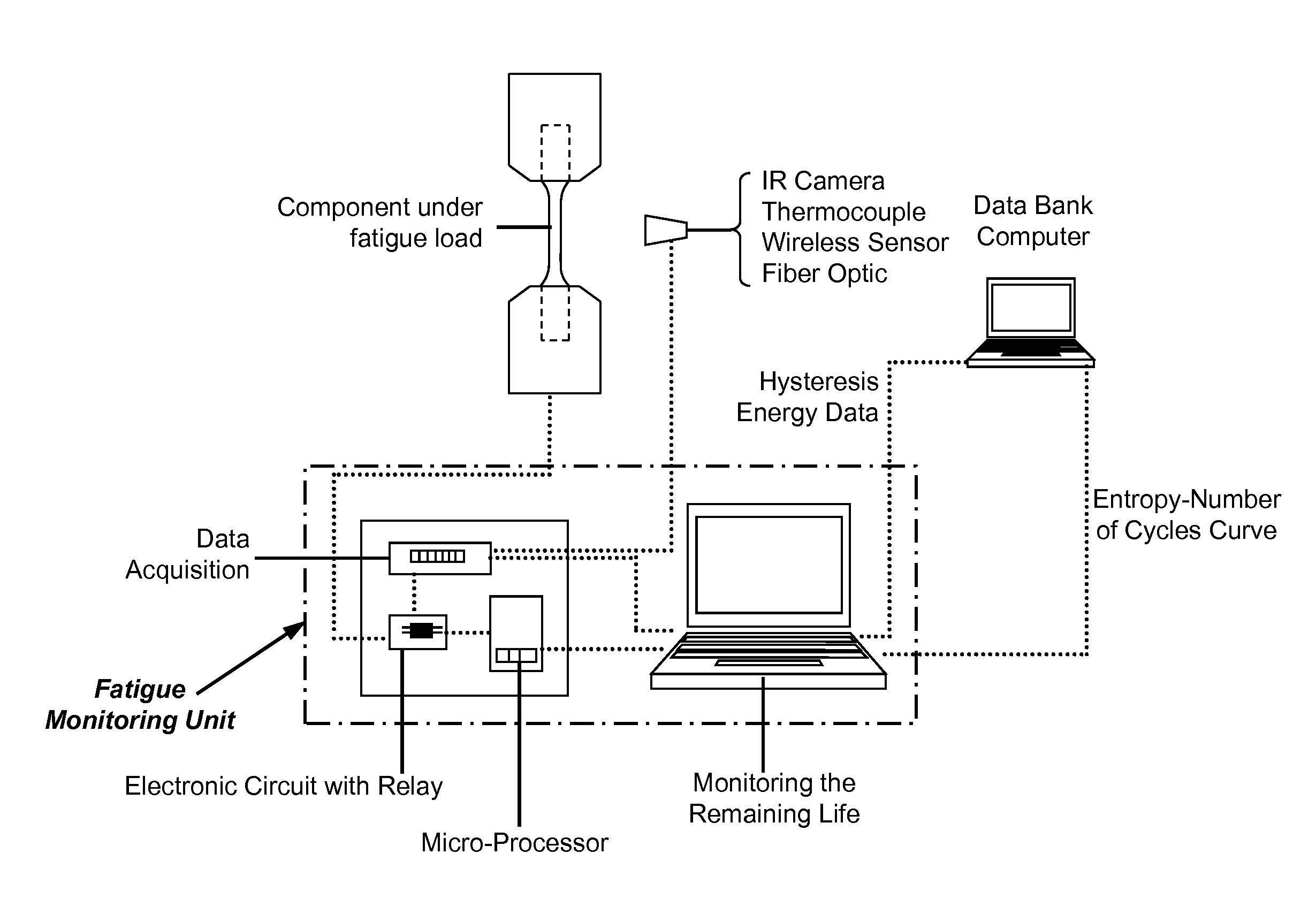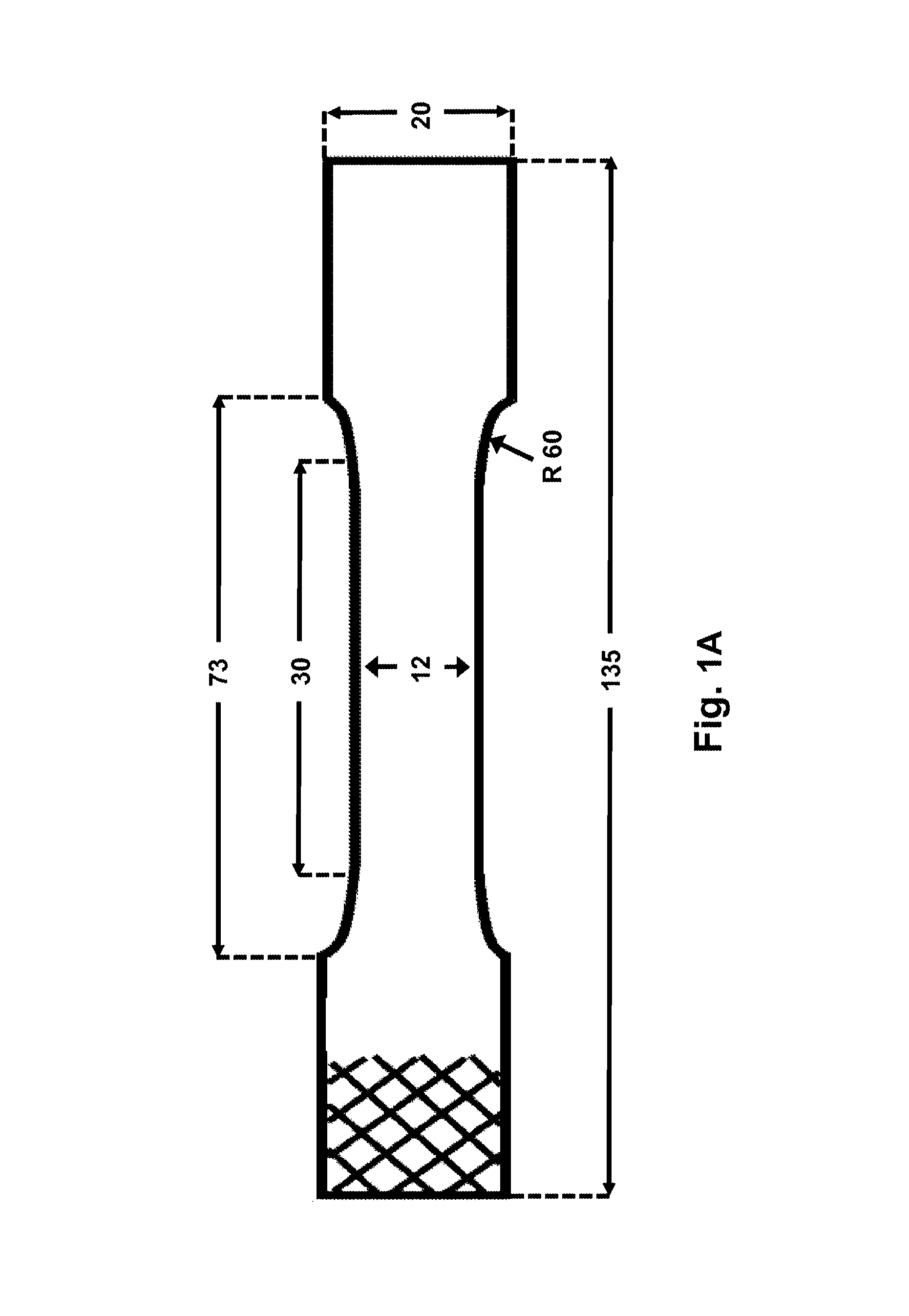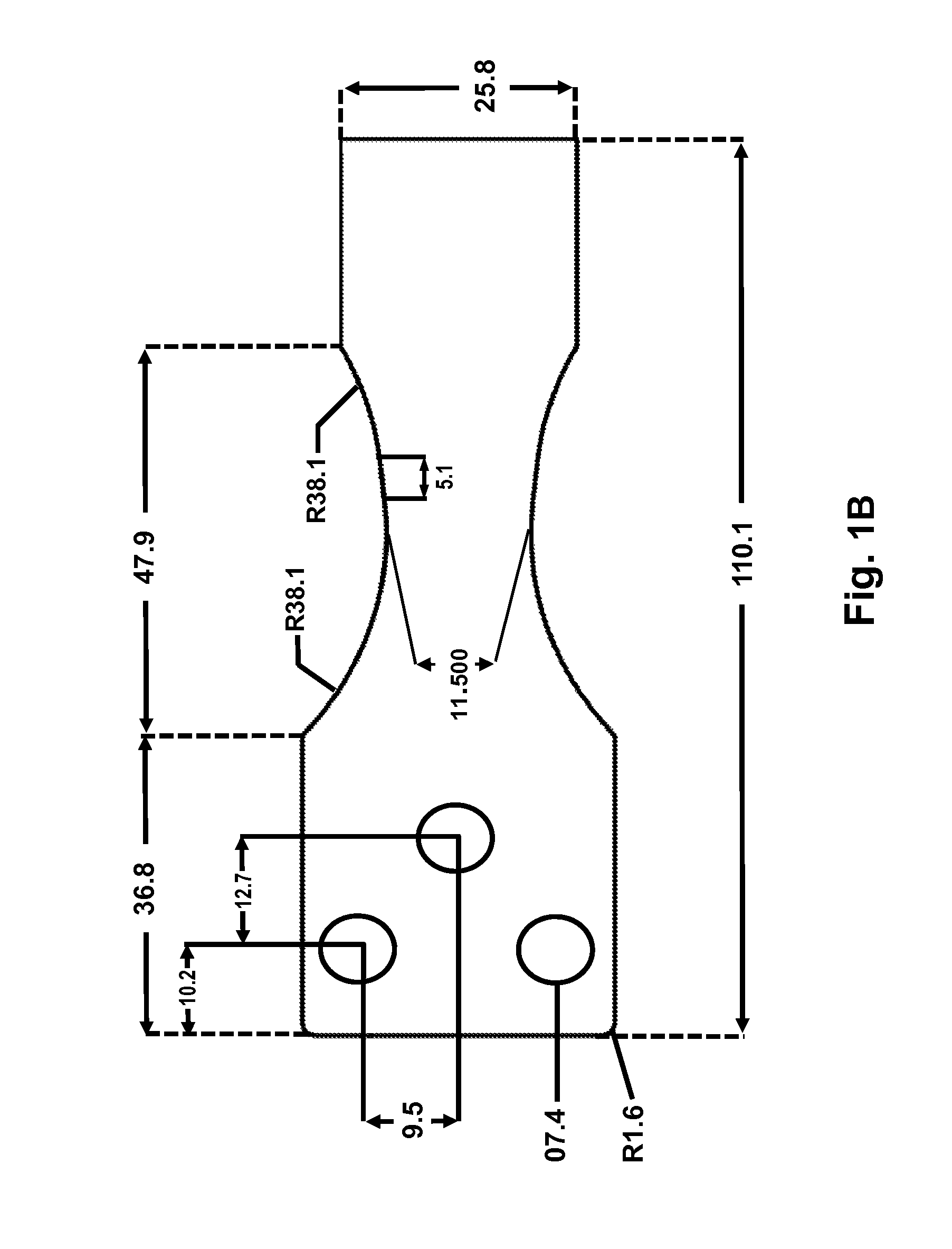Fatigue monitoring for composite materials
a composite material and fatigue monitoring technology, applied in the direction of measuring gauges, material strength using repeated/pulsating forces, instruments, etc., can solve the problems of significantly more complicated behaviors, difficult modeling, monitoring, and predicting fatigue damage in composite materials, and achieve the effect of confirming the efficacy of the invention in practi
- Summary
- Abstract
- Description
- Claims
- Application Information
AI Technical Summary
Problems solved by technology
Method used
Image
Examples
example 1
[0061]An order-of-magnitude analysis will show that the entropy generation from heat conduction is negligibly small compared to that from mechanical dissipation. A tension-tension fatigue test with 5 kN load amplitude, load ratio of zero, and frequency of 10 Hz is considered in this analysis. Referring to Equation 14, and considering only mechanical and thermal dissipation:
[0062]γ•≈wT+kT2(ΔTΔy)2≈γ•mech+γ•cond(16)
where ΔT represents the temperature difference between two cross-sections at a distance Δy from one another, where one of the two cross-sections is that at which failure occurs. Taking Δy=1.2 mm, and using actual measurements from our laboratory, Equation (16) was used to calculate the effects of mechanical dissipation and thermal dissipation on entropy production. Table 1 summarizes the results of this scale analysis. Entropy from mechanical dissipation was dominant, and entropy from heat conduction was negligible. Thus Equation (16) reduces to
[0063]γ•≈wT≈γ•mech(17)
[00...
example 2
[0065]The material studied in a prototype example was Epoxy / Glass G10 / FR4, a laminate composite of a continuous filament glass cloth and an epoxy resin binder. This composite has high tensile and flexural strength (see Table 2), and is used in a variety of applications such as electrical equipment, aerospace structures, and rocket structural components. Specimens were prepared with the glass fibers oriented lengthwise (at) 0°, crosswise (90°), and at several off-axis directions: 15°, 30°, 45°, 60°, and 80°.
[0066]
TABLE 2Mechanical properties of G10 / FR4TensileStrength (MPa)FlexuralElastic ModulusLength-Strength (MPa)in Flexure (GPa)wiseCrosswiseLengthwiseCrosswiseLengthwiseCrosswise2752403803101815
example 3
[0067]FIG. 1(a) presents schematically a diagram of the experimental setup used for a tension-tension fatigue test using an MTS 810 servohydraulic single actuator. Unless context indicates otherwise, the numerals in FIGS. 1(a) and 1(b) denote dimensions in millimeters. Sinusoidal fatigue loads were controlled with Multipurpose TestWare (MPT) software. Loads were applied at a frequency between 5 and 15 Hz, and a load ratio R (the ratio of the minimum load to the maximum load) between 0 and 0.1. Constant and variable loads were applied, both on-axis (0 and 90°), and off-axis (15, 30, 45, 60 and 80°) to the orientation of the glass fibers. Variable loads were applied either high-to-low or low-to-high.
PUM
| Property | Measurement | Unit |
|---|---|---|
| frequency | aaaaa | aaaaa |
| tension-tension fatigue | aaaaa | aaaaa |
| frequency | aaaaa | aaaaa |
Abstract
Description
Claims
Application Information
 Login to View More
Login to View More - R&D
- Intellectual Property
- Life Sciences
- Materials
- Tech Scout
- Unparalleled Data Quality
- Higher Quality Content
- 60% Fewer Hallucinations
Browse by: Latest US Patents, China's latest patents, Technical Efficacy Thesaurus, Application Domain, Technology Topic, Popular Technical Reports.
© 2025 PatSnap. All rights reserved.Legal|Privacy policy|Modern Slavery Act Transparency Statement|Sitemap|About US| Contact US: help@patsnap.com



